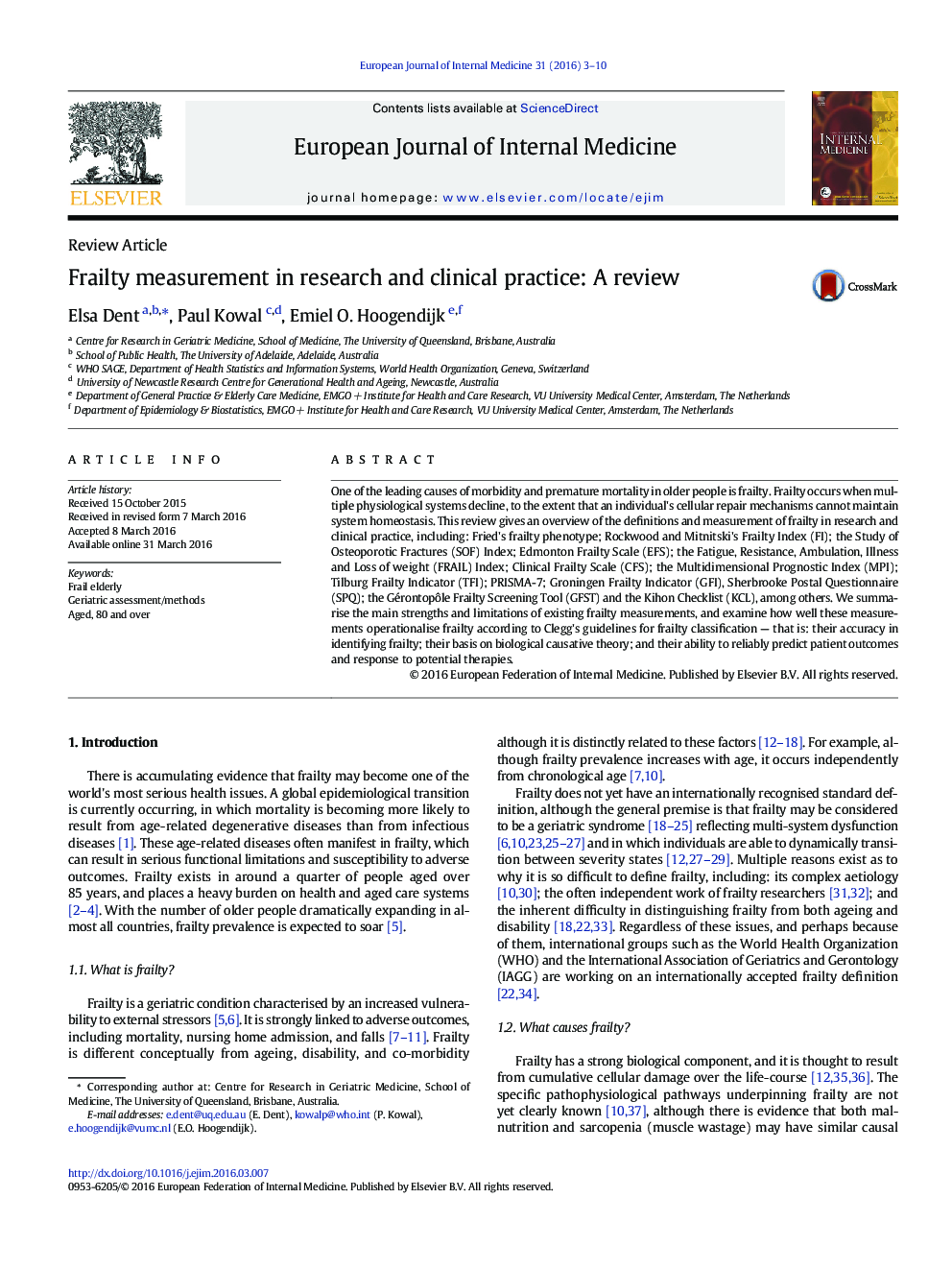| Article ID | Journal | Published Year | Pages | File Type |
|---|---|---|---|---|
| 3465862 | European Journal of Internal Medicine | 2016 | 8 Pages |
•There is no international standard measurement for frailty.•Multiple frailty measurements exist, with varying levels of quality.•Frailty measurements can be used for population screening or clinical screening/assessment.•The two most common measurements are Fried's phenotype and Rockwood and Mitnitski's Frailty Index.•Frailty should be measured in clinical practice as part of routine care for older patients.
One of the leading causes of morbidity and premature mortality in older people is frailty. Frailty occurs when multiple physiological systems decline, to the extent that an individual's cellular repair mechanisms cannot maintain system homeostasis. This review gives an overview of the definitions and measurement of frailty in research and clinical practice, including: Fried's frailty phenotype; Rockwood and Mitnitski's Frailty Index (FI); the Study of Osteoporotic Fractures (SOF) Index; Edmonton Frailty Scale (EFS); the Fatigue, Resistance, Ambulation, Illness and Loss of weight (FRAIL) Index; Clinical Frailty Scale (CFS); the Multidimensional Prognostic Index (MPI); Tilburg Frailty Indicator (TFI); PRISMA-7; Groningen Frailty Indicator (GFI), Sherbrooke Postal Questionnaire (SPQ); the Gérontopôle Frailty Screening Tool (GFST) and the Kihon Checklist (KCL), among others. We summarise the main strengths and limitations of existing frailty measurements, and examine how well these measurements operationalise frailty according to Clegg's guidelines for frailty classification — that is: their accuracy in identifying frailty; their basis on biological causative theory; and their ability to reliably predict patient outcomes and response to potential therapies.
